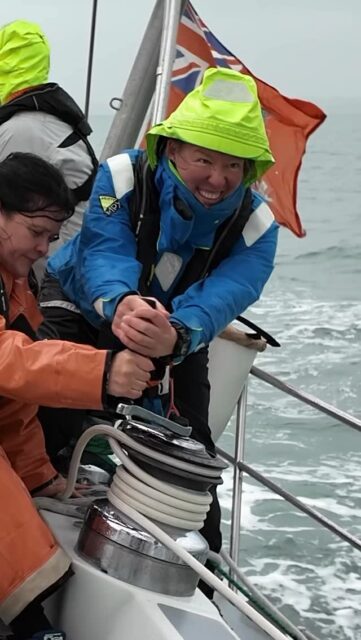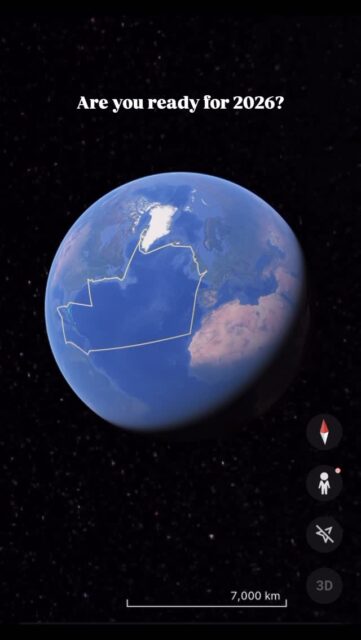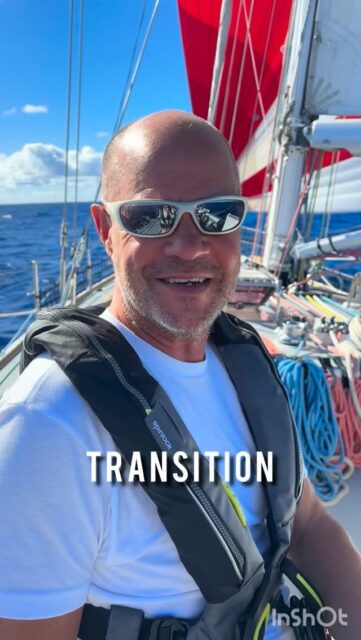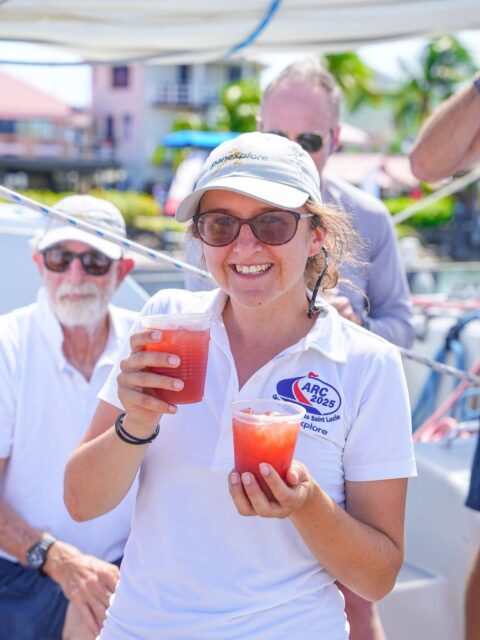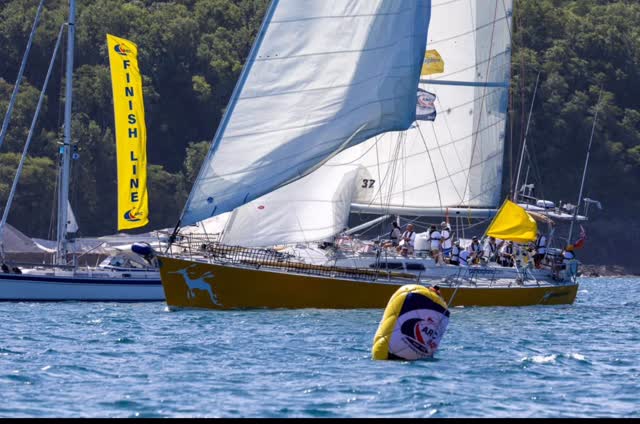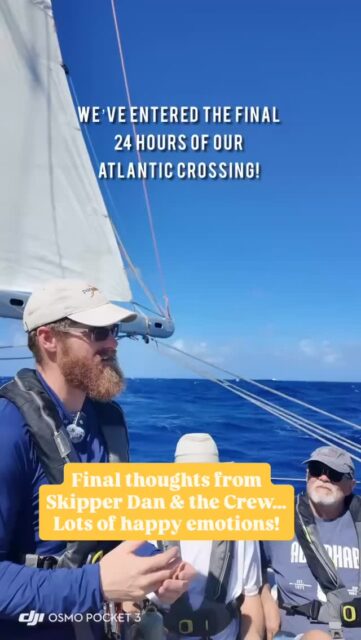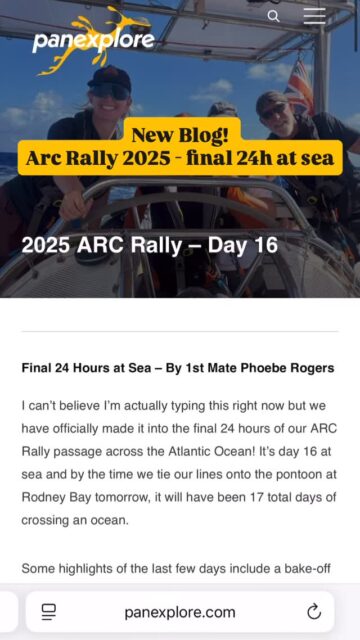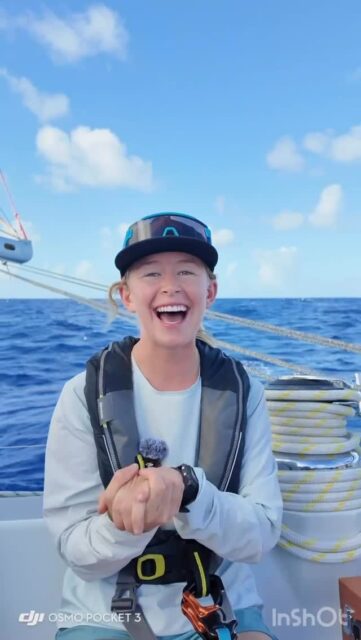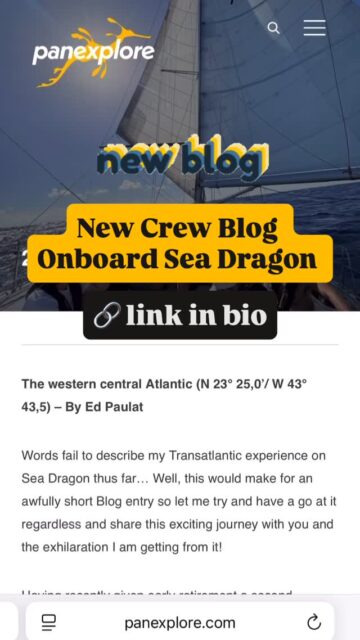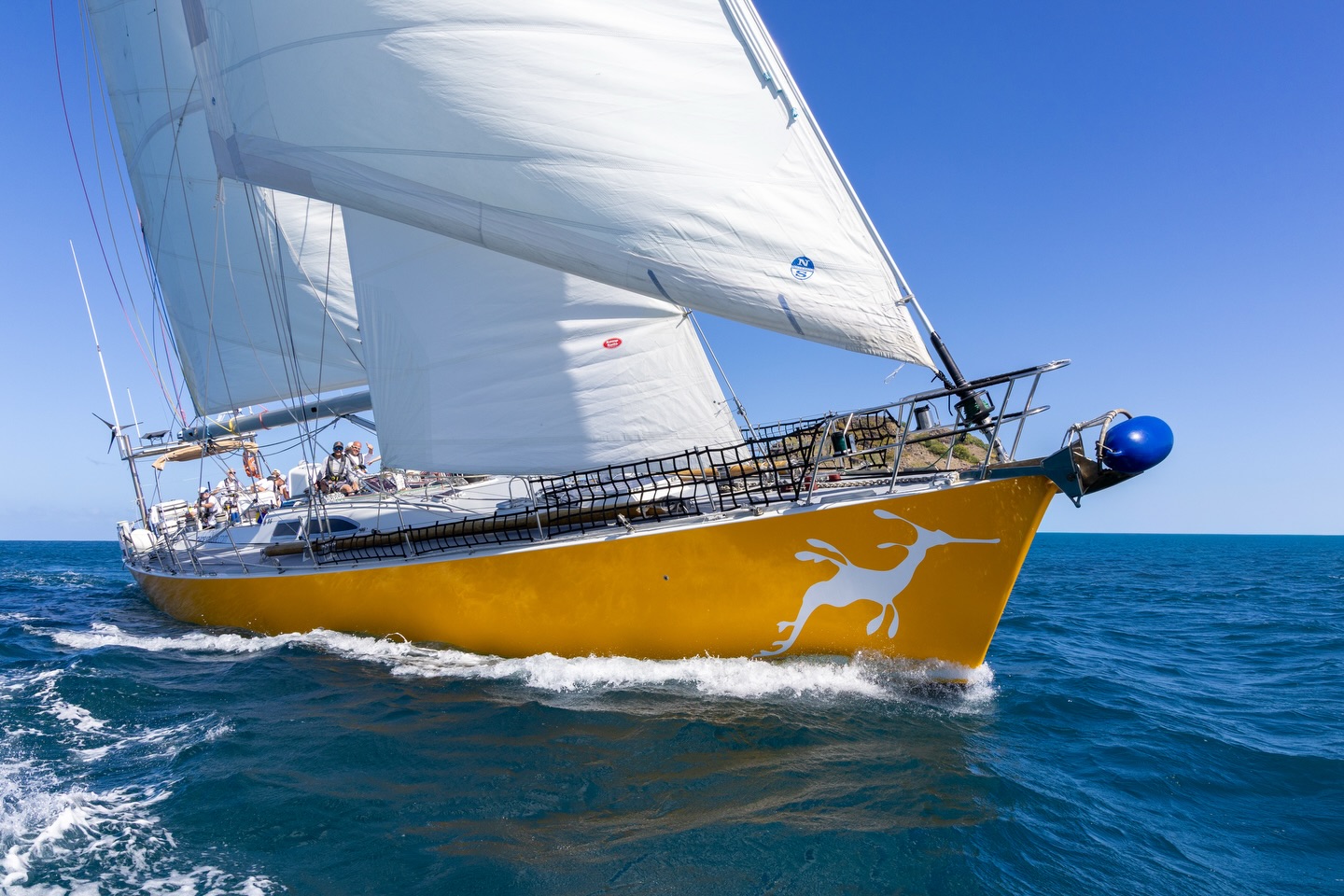
Day four out and we’re still soaked. The wind has finally subsided to a manageable 15-20 knots,at times we’re even nearly becalmed. But last night we had 30 knots plus, sometimes close to 40 which made for several sail changes through the night. Reef 3, Reef 1, Stay sail down, Yankee out, Reef 2, Stay sail—and so on. Typically at sea so many sail changes are unnecessary in such a short period of time, unless you’re racing.
The seas have organized a little bit too, coming down in size from about 4-5 meters at their peak last night and yesterday. There was a lot of cross swell (two distinct swell directions overlapping), making for sudden harsh jerking. The rice-maker took a serious nose dive, and it’s unclear if it will get out of critical condition. Early this afternoon, the sun came for but a brief moment and the crew quickly took advantage of some much needed heat and light to dry the saturated foul weather gear. Morale has been low, with toilets overflowing and breaking—when it happened you could see the silent contemplating in the crew’s faces—insult to injury countenanced, as well as the logistics of doing business in a 5 gallon bucket. So far, it hasn’t come to that.
But within minutes of the sun’s peek through the clouds, we had all foul weather gear, socks and shoes up and strung half the length of Sea Dragon, making her look like she was adorned with prayer flags, but the line assembled of much needed protection from the elements. We got just about an hour of sun, though the orb we desire never fully pierced through the clouds. I stood to the bow, filming and shooting (it’s been a rare moment where one can have her camera exposed above deck) the Sea Dragon turned Chinese Junk laundry barge. But then, first Mate Jesse’s head popped up and I knew it was time to get the gear in, as the rains were to come anon. Still stinky, but a bit dryer.
Though the rain is incessant, the sea state has come down, allowing us to begin the science work—we’ve been gathering water samples for Wood’s Hole, that they’ll analyze for Cesium, an indicator of radiation from Fukushima reactor meltdown. We’ve also gathered water samples for previous crew member and toxicologist, Anna Karmen, who will analyze them for persistent organic pollutants. The sea state is still too big to safely deploy the Manta Trawl but Marcus got the Flying Dutchman, or high speed trawl in at dawn. We’re hugging about 33 degrees latitude as harsh weather exists to the North, where the wind would be on the nose. But eventually we’ll have to steer Sea Dragon that way, facing what we must, as the projected debris field is up between 35 and 40 degrees latitude, about 800 nautical east by north of our present position. We’re trying to steer as steep a broad reach to due east as we can, to keep the wind at our back, and the seas following, hoping that we can hug 33 degrees (or at least not drop to low) as we move across the southern edge of the low pressure system we’re skirting–the remnants of Typhoon Mawar.Mawar’s leftovers dominants nearly the entire North Pacific at present, some 6,000 miles of ocean. The outer bands aren’t calling for much bigger wind that 35 knots, but still, 35 knots and rain can be hell. The surfers onboard are thinking about how lucky some wave-riders are going to be as this system fans out and delivers clean, long period swell. As we drop ever so slightly in latitude, we hope that with the eastward longitude we gain that we can get to the other side of the low, and have favorable southwest winds and following seas to push us north to 35-37 degrees north where we’ll investigate the Debris field. But that’s a week away still.
We’ve also started our marco-debris surveys, taking the middle hour of each watch team’s three to have two people keep their eyes peeled to the ocean to catalog any flotsam as it goes by while the other one steers the ship. On the first leg with the previous crew, the team cataloged just under 300 pieces of flotsam–97% of which was synthetic based, or plastic—which is why the expedition partners refer to this problem as plastic pollution. We also keep an eye out for wildlife. And as you can see by the picture I took of Paul Sharp, we’ve had a visitor. She circled for about an hour, then landed on the life lines, and soon, was smitten with Paul. No one is able to identify the species with the books we have onboard, but if anyone out there knows, please let us know in the comments and our land based team will send word back to us. It’s unclear if the bird is sick or just tired, but she seems to be able to fly well still and we’re hoping for the best. We’ve tried to feed her a slurry of shrimp, but she’s refused. She’s not been catching a ride on Sea Dragon for several hours.



